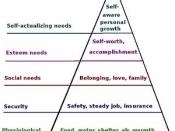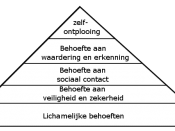Compare and contrast two theories of motivation. Suggest how a team leader might use these theories to motivate the team.
In this essay, I will be discussing what motivation means. I will then explain the content and process theory of motivation, and within each respective category, I will provide a detailed explanation of Maslow's hierarchy of needs and Vroom's expectancy theory. Thereafter, the essay will examine how a team leader can apply and execute these strategies suggested by the relevant theories effectively within the workplace in efforts of motivating his/her team. Throughout the essay, definitions and arguments will be presented and supported by academic literature prior to reaching a conclusion.
This essay encapsulates the definition of 'motivation' in regards to work which is defined by French et al. (2011: 666) as referring to the 'forces within an individual that account for the level of direction and persistence of effort expended at work.'
In other words motivation is the drive that we have to continuously 'perform' and 'achieve' within our work environment. It is therefore clear, that motivation is a highly critical and crucial aspect within the business world. Motivation can be attributed to the field of psychology as it deals with the human and emotional aspect of what makes one individual highly motivated to achieve something as opposed to someone who is not motivated to pursue a goal and achieve the desired outcome. Today, motivation applies to all walks of life such as in sports, education and personal motivation, but for the purpose of this essay, I will be examining motivation from a business management perspective. Motivation in the workplace was an alien concept in the 20s and 30s. Siblinger (1993: 248) tells us how Elton Mayo who is now known as the founder of the Human Relations Movement,


